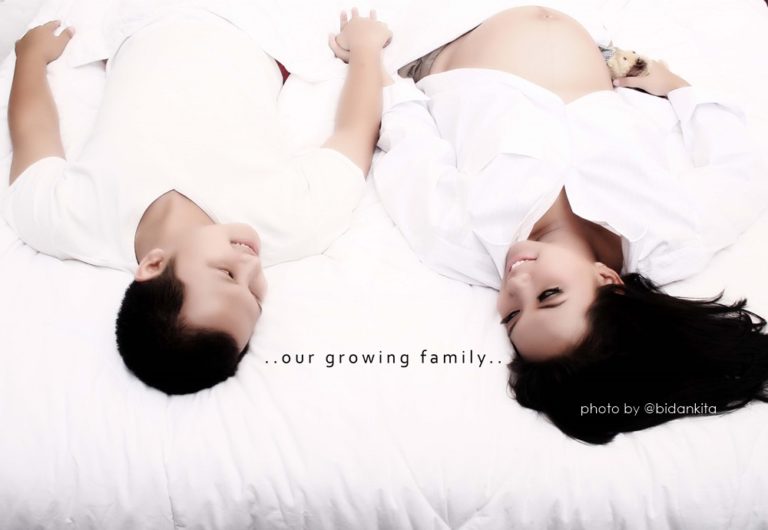ASPECTS OF THE HUMANIZATION OF WATERBIRTH
PATIENT PREPARATION FOR LABOR IN WATER
In the development of modern obstetrics the most important thing to be performed is the humanization of the labor and birth process. This is an approach focused on the family, patient autonomy and pain management. This effort is essential for fetal and neonate safety.
The Royal College of Gynecologist and Obstetricians published guidelines, protocols were agreed upon, to prevent complications that are not predictable.2, 3 Thus guidelines are absolutely needed by the service provider of water birth. Guidelines or protocols are a main reference when formulating a basic approach to the patient and her family.
Some of the existing research indicates that being in the water during labor and childbirth provides a significant advantage in birth outcomes. Each maternity unit should have a policy of water birth, including guidelines for patient preparation including information about water birth. Service providers should be required to provide guidance on the process of childbirth to mother and family.2, 3,4,5,6
Understanding the risk factors that will be experienced by the mother and the baby is important, so that the prospective mother is completely ready to do the water birth. Labor protocol is a matter that absolutely must be upheld to prevent risks and complications during labor.6 Considering risk for the baby is important. However, the majority of medical experts believe that this situation is very rare, because babies will not breathe until the baby is exposed to air.7, 8
In 1999, Gilbert, et al published their research in 1996 by taking a sample of 4032 infants born in the water. This study concluded that the prenatal mortality is not significantly higher than the risk of conventional childbirth.9
In the protocol designed for water birth, the Australian Government also asserts that all health workers involved are responsible for any information given to women candidates in each provider’s water birth techniques. Data, which is provided, should be accurate and up to date .10 Patients have many birth choices to consider making informed consent important when choosing water birth. 7,8,9
In general, preparing the mother for waterbirth does not differ much than preparing the mother for conventional birth. A conducive environment for the prospective mother during water birth strongly supports the success of this program. The role of the assisting family is important as well in the preparation of childbirth. 11
PATIENT SELECTION
Water birth is generally given to the term pregnant woman with no complications.10, 12
Confinement terms for water birth:
1. Low-risk pregnancy 2. No vaginal, urine, or skin infection 3. Vital sign within normal limits and infants CTG normal (baseline, variability, acceleration) 4. Warm water is used for relaxation and pain management after cervix dilatation of 4-5 cm or more. 5. Patients cooperative with birth attendant instruction, including a possible exit from the pool if necessary.
Criteria / Indications 10, 13.14
1. It is a mother”s choice 2. Normal pregnancy > / 37 weeks 3. Single fetus with head presentation 4. No use of drugs-sedative 5. Spontaneous broken membranes < 24 hours 6. Non-clinical criteria such as staff and equipment 7. No pregnancy complications such as pre-eclampsia, uncontrolled blood sugar level, etc. 8. Normal heart rate 9. Clear amniotic fluid 10. Spontaneous childbirthing or after using misoprostol or pitocin 11. There is no bleeding. It is difficult to assess the loss of blood in water birth due to the lack of attendant experience in water birth. If that be the case, some service providers may prefer to deliver the placenta outside of the pool.
Contraindications 10,13,16
1. Infection that can be transmitted through the skin and blood.
2. Febrile mother or other evidence of infection.
3. Herpes genitalis. Herpes is very easily transmitted through water.
4. Abnormal fetal heartbeat.
5. Abnormal vaginal bleeding.
6. HIV, Hepatitis.
7. Macrosomia.
8. Meconium. A light or medium meconium can be said normal in childbirth. However if thick meconium appears in the water, the attendant should clear or help the patient out from water birth pool.
9. Breech presentation of the baby.
10. Multiple pregnancy.
11. Babies who are estimated to be born premature (2 weeks more or before the time of confinement)
12. Condition that needs continual monitoring unless there is a condition where the waterproof transducers (Doppler) are available.
WATER BIRTH TECHNICAL ASPECT
Provision facilities and infrastructure of water birth in general can be adjusted with the place where water birth will be implemented. Clinics, hospitals and even at home can also be good settings for water birth as long as criteria is still met and the rules and guidelines are followed. Based on the above, the technical procurement of water birth that must be owned: 16
Technical procurements on hand:
1. Confinement pool 2. Water pump: electric water pump works more quickly than hand water pump 3. Water pipe: choose a quite long water pipe in order to reach water sources and confinement pool. 4. Faucet hose adapter: choose the adapter that is easily removed and not part of other circuits
Other suggested equipment:
1. Debris removal Net. It is normal for the mother to defecate during second stage of labor, in this case, use debris removal net to retrieve and dispose of it.
2. “Y” pipe adapter and End Cap to connect between Faucet adapter and water pipe.
3. Hand-held Mirror. Many women in labor who start to push in hands and knees position. This position makes the mother unable to see the baby when the baby is born. By placing the mirror at the bottom of the foot and the light to the mirror, the mother can see the birth process easily.
4. The lamp can be placed in the water directed to the mirror at the top so that the mother can see the birth process easily
5. Thermometer in the water. This device helps care providers to regulate water temperature.
6. Submersible water sucker. Portable sucker pipe means that pipes can be used to drain the pond without the need to find a power source.
7. Gloves of sufficient length to protect care providers while listening to the heart of the baby or checking dilatation.
In addition to standard equipment, some equipment below should also available in the water birth service: 12
1. Maternal thermometer. 2. Waterproof Doppler. 3. Water resistance cloth. 4. Additional that can help the mother out of the pool if necessary. 5. Knee bolster, cushion, low stool and birthing balls should preferably be provided so that care providers are comfortable (Burn & Kitsinger 2001).
In 1995, Alderdice et al., conducted research on 4494 retrospective confinement in the water made by midwives in England and Wales. They reported the deaths of 12 infants, 51 cases of illness (respiratory infection). However, the researchers concluded that no evidence found that confinement in the water is less safe than conventional labor 20 American Academy of Pediatrics 19 mentions that the safety and effectiveness of the baby in water birth cannot be confirmed. Meanwhile, the British Pediatric Surveillance9 mention deaths or the need for special handling of babies born in water from years 1994-1996. Some reports of cases 21 mention that there were sepsis of the baby because of pool contamination, but the numbers cannot be proven scientifically. Based on that, the procedure to maintain pool water cleanliness needs more attention by each provider of water birth.
Below are the procedures and guidelines quoted from the Australian government for the water birth: 12.
1. Clean portable swimming pools with disposable liners
2. In the practice of swimming pools, spa regimens should use solvents in jets, sucker pipes, pipes and filters. Between births the tub must be cleaned by using liquid Chlorine each time it is used. 3. Cleaning fluid is a liquid that is commonly used in hospitals or who has received approval by the local organization. 4. Birth tubs should be dried under the air. 5. Birth tubs before re-use should be cleaned again. 6. Reinforced with routine maintenance. 7. Routine testing is done for Legionella in hospital water supply where the test bacteria is adjusted to the recommendations of local government.
Controversy about water birth has been around since 1723. It cannot be not separated from the various research results that have been conducted by various researchers in various countries. In fact this method is widespread and popular in the community. Use of analgesia during labor is low and comfort earned by the mother during childbirth is a strong attraction for the candidates and the water birth services. Quality improvement and standardization of services in accordance with guidelines is the key to comfort and safety of this technique. Therefore, researchers should continue to seek accurate information so that hey may develop reasonable guidelines for water birth. Valid research, of course, is supported by good research methods and controls. Hopefully in the future with the increasing number of randomized and controlled trials we will be able to improve the scientific assessment of water birth. In summary water birth can be one of the best methods of childbirth sought after by expecting family”s aiming for baby”s gentle landing on earth.
Warmly
Yesie Aprillia S.Si.T, M.Kes
References
1. Grunebaum A, Chervenak Fa. In the baby or the bathwater: which one should be discarded?J. Perinatat.Med 2004; 32:306-7
2. Alfirevic,Z,et al. Immersion in water during labour and birth (Royal college of obstetricians and gynaecologist/Royal college of midwives joint statement no.1).2006;{5 screen}.. Available from: URL: http:/www.rcm.org.uk/info/docs/RCOG_RCM_Birth Accessed: May 12,2009
3. Duley, L.M.M. Birth in Water (RCOG Statement no.1).2001:{3 screens}. Available from: URL: http://www.birthbalance.com/stories/serenity.pdf. Accessed: May 12,2009
4. Palmer, J. In water during labour and birth. 2001; {4 screens}. Available from: URL: http://www.mybirthdesign.com/.Accesed: May 13,2009
5. Chapman,B. Water birth protocol: Five North Island hospital in NeW Zealand. College of midwives Journal.2004; 30:20-4
6. Singh U, Schereiner A, Macdermott R, Johnston D, Seymour J, Garland D,et al.Guidelines for Water Birth within the midwifery led unit and at home (Dartford and Gravesham-NHS Trust).2006;{4 screen}. Available from: http//www.darentvalley hospital.nhs.uk. Accessed: May 13,2009
7. Parker PC, Boles RG. In pseudomonas otitis media and bacterimia following a water birth. Pediatrics 1997; 99:653-4
8. True about water risk and complications. 2006; {2 screen}. Availabel from: http://www.water birth risk often involve various problems with breathing.htm. Accessed: May 13,2009
9. Gilbert,RE, Tookey, P.A. In Perinatal mortality and morbidity among babies delivered in water: surveillance study and postal
10. Garland,D, Choo,YP, and birth –The royal college of midwives.2000;{4 screens}. Available from:URL: http://www.rcm.org.uk/info/docs/RCOG_RCM_Birth . Accesed: May 14,2009
11. M
12. Policy-First stage labour in water. Government of South Australia.2005;{9 screens}. Available from: http://www.health.sa.gov.au/ppg/portals/0/waterbirth_First_Stage_Labour_in_Water_Policy_December_2005.pdf. Accesed: May 14,2009
13. Guidelines for water at OHSU. Oregon health and sciences university water birth guidelines.2001;{1 screen}. Available from: URL: http://www.data.memberclicks.com/site/wi/OHSU_2001-guidelines.pdf. Accesed: mAY 14,2009.
14. Water birth – Wikipedia, the free encyclopedia (Wikipedia foundation,, INC). 2007; {8 screens}. Available from: URL: http:/www.enwikipedia.org/wiki/water_birth. Accessed: May 14,2009
15. Anonymus. Waterbirth guidelines.2009;{1 screen}. Available at: URL: http://www.yourwaterbirth.com/water-birth-pools-liners-c-1.html.Accessed: May 15 2009
16. Roberts D. In guidelines for the use of water during labour and in the event of deliveries. Liverpool womens hospital NHS trust. 2002;{4 screen}. Available at:URL: http://www. Accessed: May 14,2009
17. Burns E, Kitzinger S. Midwifery guidelines for use of water in labour. Oxford Centre for Health Care Research and Development, Oxford Brookes University, 2001
18. Garland D. Waterbirth-an attidute to care. Cheshire: Books for Midwives,1995
19. Batton, DG,et al. Underwater births. Pediatrics,2005; 115;5:1413-14
20. Alderdice F, Renfrew M, Marchant S,et al. Labour and birth in water in England and Wales. BMJ 1995;310:837
21. Vochem M, Vogt M, Daring G. Sepsis in a newborn due to pseudomonas aeruginosa from contaminated tub bath. BMJ 2001;345:378







